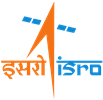
The LIBS, is engineered to execute in-situ elemental studies on the lunar surface by investigating 16 significant elements
(H, C, N, O, P, S, Na, Mg, Al, Si, K, Ca, Cr, Fe, Mn and Ti) of interest to infer the lunar surface chemistry of the landing
site from the collection lens to surface distance (CLSD) of 205 mm. This instrument works on the principle of ‘laser induced
plasma emission spectroscopy (LIPS)’ technique that use high peak power laser pulses for the surface ablation and intense
plasma plume generation. The hot dense plasma during its decay radiates emission lines, which are characteristics of the
elements present in the target sample. LIBS payload is capable of registering emission signatures in the spectral region of
220 nm – 800 nm with a pixel resolution of 0.35 nm. The space-use LIBS instrument is a lightweight (≤ 1.2 kg), low power
consuming (<5 Watt) compact module with an overall volume of ~ 2.2 liters. It can operate in the temperature range of -20 0 C
to +55 0 C promising the limits of elemental detection (LOD) down to few 100s of ppm levels.
|








